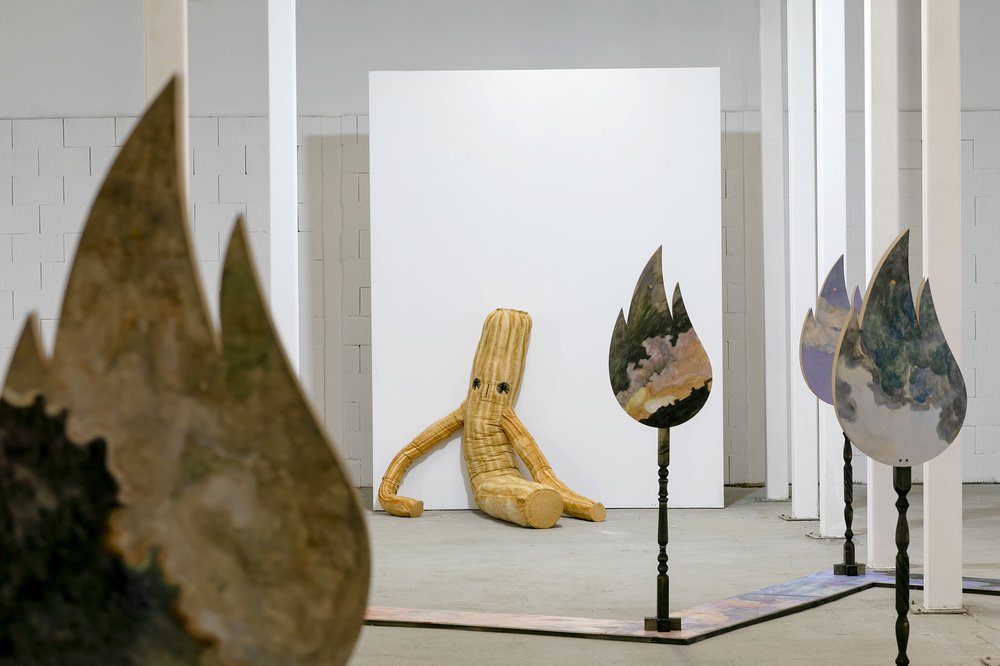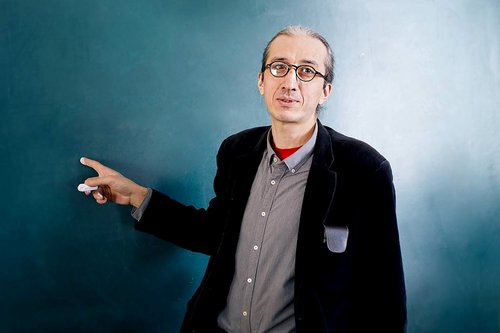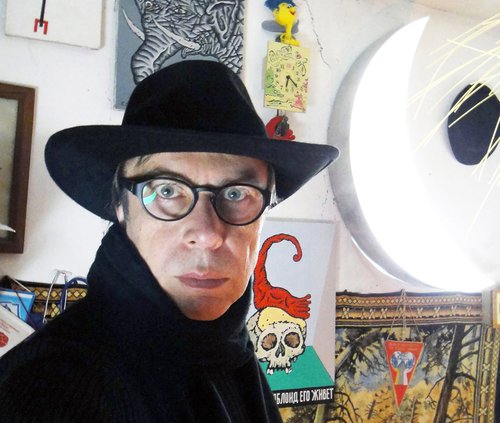Swimming against the Tide: Curators Reject Contemporary Mysticism

After the Fairy-Tale. Resistance to Enchantment. Exhibition view. Kaliningrad, 2025. Courtesy of Sfera Foundation
Art curators Sergei Guskov and Slava Nesterov have bravely challenged the popular trend of DIY mythmaking in their new exhibition in Kaliningrad. Called ‘After the Fairy Tale. Resistance to Enchantment’, it turns out that contemporary myth is more resilient than it appears.
Fairy tales are everywhere on the Russian art scene. Ever more exhibitions on the subject of old folk tales and contemporary myths are sprouting up in different cities all over the country. There is even an itinerant exhibition of fairy-tale paintings that travels from city to city aimed at family audiences. With reality increasingly resembling a horror film, escaping into an innocent fairy-tale world where good always triumphs is easy to justify.
However, two curators in Moscow, Sergey Guskov and Slava Nesterov, believe that this kind of escapism has its limits. Their current exhibition in Kaliningrad is titled 'After the Fairy Tale. Resistance to Enchantment' which is on view until 3rd of August. Conspirology and homegrown mysticism are becoming increasingly prevalent in everyday life, as well as in art, yet the curators want to reverse this trend and asked the artists to create works that 'analyse new myths instead of taking them for granted', as stated in the exhibition's press release. “Our goal is to strike a balance between mystical and rational thinking,” Nesterov explained at the opening of the exhibition.
The geographical location for the show was aptly chosen by the Sfera Foundation, not the curators themselves. Formerly known as the Smirnov and Sorokin Foundation, it used to run artist residencies and studios in Moscow, but has recently shifted its focus to Russia’s provinces, launching exhibitions and temporary residencies in partnership with independent art institutions across Russia. The new show is taking place in Kaliningrad, the birthplace of Immanuel Kant – as logical a place as any in which to celebrate rational thinking. Yet, although Kant-related souvenirs are sold on every street corner of the city, his books are much harder to find. The place's past and present leans more towards the absurd than the rational. Formerly part of Eastern Prussia, the Kaliningrad region became part of the USSR thanks to a peace treaty signed after World War II. The main city, Königsberg, whose name was changed to Kaliningrad by the Soviet authorities, was heavily bombed during the war, so little of its German heritage has survived. Despite having no border with Russia, the region became part of the Russian Socialist Federative Republic rather than its immediate neighbour, Lithuania, which was an independent state before World War II and regained its independence in 1990.
The Kaliningrad region is currently an exclave surrounded by the NATO countries of Poland and Lithuania, with mainland Russia only accessible by sea, air or a single railroad. To reach the region, Russians must travel by plane or by train, which runs Lithuania; therefore, passengers must apply for a transit visa before boarding. During the Soviet era, Kaliningrad was a so-called 'closed city' due to its proximity to the border. For decades, it was populated mostly by seamen, fishermen, soldiers, and their families, and travel here from other parts of the Soviet Union was restricted. Yet somehow, an air of freedom seeped through the Iron Curtain into this military outpost. Western goods were easier to obtain here, mostly smuggled in by seamen and whalers, and the black market thrived. When the borders opened in the 1990s, the people of Kaliningrad enjoyed freedom of movement and travelled more often to Europe than to mainland Russia. However, this changed abruptly with the onset of the pandemic and the Ukrainian crisis. The borders were shut again, yet at the same time, the region became a popular tourist destination for Russians who wanted to experience Europe but did not qualify for a visa, or for those who missed the seaside resorts of the Baltic states from their Soviet childhood. Back then, many Russian families travelled to coastal towns in Lithuania and Latvia for holidays. Although the weather in the Kaliningrad region is rougher than in these resorts, nostalgia-driven crowds still flock to its shores, stubbornly braving the piercing Baltic winds as they stroll along the beaches in their sweatshirts and hats.
Kalingrad's turbulent history means it is not rich in cultural attractions, although the Russian government is trying to change this by opening branches of major cultural institutions in the city such as the State Tretyakov Gallery and the Bolshoi Theatre (the latter is scheduled to open in 2027). The Russian Art Centre, an exceptionally ambitious independent project by local businessman and art collector Rustam Aliev, is also expected to open in the same year.
Sfera only managed to find one private art space for the Fairy-tale show called Barn, a converted wooden shed that used to house a spool factory. Overgrown with trees and shrubs on all sides, from the outside the structure looks exactly like a barn. Inside, however, it is a neat, Kunsthalle-like, two-storey space, tastefully renovated by its founder, Tatiana Matveeva, an interior designer from Moscow. However, the structure has no central heating, so it is only operational during the warmer months of the year, from spring to autumn. Matveeva and her staff have transformed the backyard of the shed into a communal vegetable garden where locals can experiment with agriculture. A bumpy, unpaved road leads to the Barn, where a pack of friendly stray dogs welcome visitors approaching the front door.
For those not put off by the location, the exhibition may provide food for thought, but there are no easy answers on offer. Bucking the trend proved to be more difficult than the curators had anticipated. “The story is that we are critical about it, but we don't impose our view of the world on artists,” Guskov explained. Some of the participants in the show responded to the call with enthusiasm. St. Petersburg-based artist Pastor Train (b. 1994) has created a witty video in the style of early silent films called 'Sir Arthur and Spirits', alluding to Sir Arthur Conan Doyle’s obsession with spiritism. The highlight of the exhibition is Katia Antoshkina's (b. 1997) site-specific artwork, 'There Is No Smoke Without Fire', which covers most of the floor space. A clever combination of painting and installation, Antoshkina has created a path which zigzags over a swamp where lights and smoke appear to lure unsuspecting travellers to their doom. However, some of the artists have challenged the intentions of the curators arguing that myth-making is an integral part of their artistic vision. Vika Khadanka (b. 1992) has created a new mythical creature: ´Pnischche´ (Eng. A Big Tree Stub), a textile sculpture of a listless, motionless figure that is part human and part tree, with stumps instead of limbs. Masha Obukhova (b. 1986) has deconstructed her own artistic practice by dismantling her signature butterfly-human character and recombining the pieces to turn a dreamlike figure into a fragmented soulless assemblage.
Some of the commentary by the artists on the subject is more vague than mysterious. Kaliningrad-based artist Yodzi (b. 1987) cut the silhouette of a mysterious reclining figure out of wood creating an object called 'Supernatural Recumbence' that could fit into any exhibition on contemporary myths. Sukhra Salakhova (b. 1997) from Kazan displayed a tie made of canvas covered in beeswax, a collaboration between humans and bees that aligns perfectly with the current curatorial trend of post- and trans-humanism. To confront myth successfully, it seems that an artist needs a strong, clear message and a distinctive voice with which to stand up to the mystical fog. Clear thinking and artistic integrity are not easy to find on the Russian art scene these days.
The author’s visit to Kaliningrad was organised by Sfera Foundation.
After the Fairy-Tale. Resistance to Enchantment
Kaliningrad, Russia
27 June – 3 August 2025














